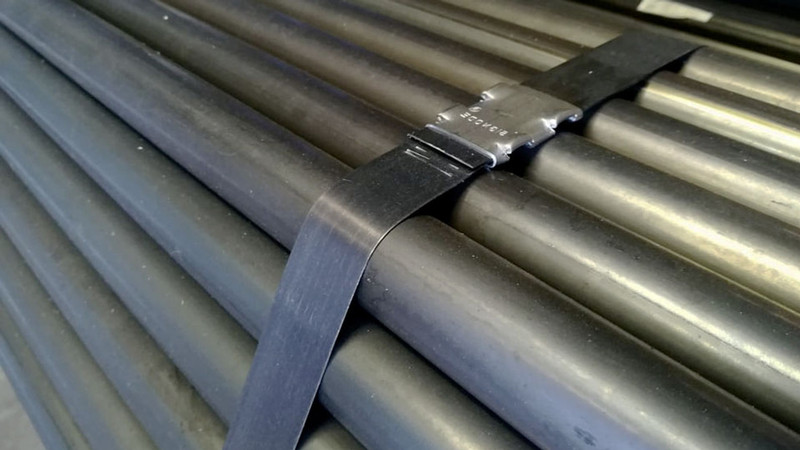Posted by Mike Cunningham on Apr 29th 2025
Choosing The Right Steel Strapping.
Quick Pak Inc offers a wide selection of steel strapping products, including standard grade, high tensile, and heat-treated options. These products are designed to cater to various load requirements, ensuring the safe and secure transportation of goods across industries.
Winding types of steel strapping: Steel strapping is a vital component in securing heavy loads across various industries, ensuring that products remain intact during transportation and storage. One critical aspect of steel strapping is the method by which it is wound into coils, as this affects both its application and handling. The two primary winding types are oscillated wound and ribbon wound.
Oscillated Wound Steel Strapping: In oscillated winding also known as rope or mill wound steel strapping, is where the steel strapping is wound in a tight, uniform pattern across a narrow face width, typically around 2-5/8 inches. This method allows for a longer continuous length of strapping per coil, which can be advantageous in applications requiring extended runs without frequent coil changes. The compact nature of oscillated wound coils makes them easier to handle and store, and they are commonly used in automated machinery due to their consistent feed.
Ribbon Wound Steel Strapping: Ribbon wound strapping is coiled so that each layer is wound directly over the one below it, resulting in a coil where the face width matches the width of the strapping itself. This winding type typically results in coils that are lighter and have less length per coil compared to oscillated wound strapping. Ribbon wound coils are often preferred in manual applications or where shorter lengths of strapping are sufficient. They’re better for when the coils need to be more mobile.
Choosing the Right Winding Type: The selection between oscillated and ribbon wound steel strapping depends on several factors:
Application Requirements: For tasks that demand long, uninterrupted lengths of strapping, oscillated wound coils are ideal. Conversely, ribbon wound coils are suitable for applications where shorter lengths suffice. Typically, heavier gauges of steel strapping are only offered in oscillated wound coils.
Equipment Compatibility: Automated strapping machines often accommodate oscillated wound coils due to their consistent feed and longer lengths, reducing the need for frequent coil changes.
Handling and Storage: Oscillated wound coils, being more compact, are easier to handle and store, which can be considered in facilities with limited space.
Understanding the differences between oscillated and ribbon wound steel strapping is essential for optimizing both the efficiency and safety of your strapping operations. Selecting the appropriate winding type ensures that the strapping process aligns with your specific application needs and equipment capabilities.

Knowing the differences in these two methods is also important when selecting a dispenser as dispensers are typically never cross compatible with different winding types.
More information on steel strap, call us at 813 242 6995 or reach sales@quickpakinc.com

